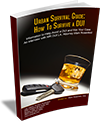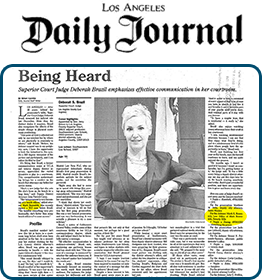The Possibility of Fermentation in a Blood Specimen Cannot Be Determined by a Graph
Hearing Officer: He was stating that a 0.1, he says that a blood reading can be 0.1 in a day and can go up due to fermentation, and these graphs are showing that. Initially, there was this lower peak and then when it went up to this higher peak, fermentation has set in and that cause the rising in this peak on both of these graphs. So that’s what he was, his testimony was and that’s what he’s basing his opinion on. So he was saying based on this opinion, the respondent blood alcohol concentration at the time of driving is below 0.08, because of the peaks and, the 2 peaks in these graphs, and the higher peak shows fermentation.
Expert: I’ll have to disagree with that. I do agree with the statement that there could be fermentation in the blood specimen, other I don’t agree that you can determine that it has occurred by the appearance of the graph. If you look at the table down below on page 2, there’s a line that says peak area ethanol and for the evidentiary sample, it hovers around 629 for the first trial and 642 for the second trial. So it’s not logical to make a conclusion that the second trial was greater because of fermentation. I, it’s my testimony that the blood vial used in this case was a grey vacutainer blood collection tube, which does have sodium fluoride as a preservative and potassium oxalate as an anti-coagulant. Therefore it reduces any growth of alcohol, any increase of alcohol due to fermentation. And the blood specimen was refrigerated shortly after the time that was withdrawn from the subject on, to the time it made its way into the laboratory, so there is very little if any opportunity for fermentation to uh, proceed.
Experts May Either Re-Affirm a Result or Argue Why It May Not Be Valid
Hearing Officer: Based on the data here and your testimony, it is your opinion that the blood was also 0.13 are firm. Is that correct?
Expert: Yes, based on the content of my report, after reviewing it, I’m at the opinion that the 2 results obtained replicately of a 0.132 and a 0.130 make an average of 0.131% which is reportable as a 0.13% on the Title 17 California Court Regulations. I believe that this analysis is accurate or was accurate at the time, it was accurate, and represents accurately the amount of alcohol in that blood specimen.
Hearing Officer: Based on this data, is it your opinion that respondent’s blood alcohol concentration at the time of driving was above 0.08?
Expert: To make a conclusion, you have to know the time that the subject was stopped and the drinking pattern of the subject.
An Expert Witness Can Provide Examples of Potential Possibilities in a Trial
Hearing Officer: Okay, the subject was stopped at 1:30 AM. The blood was extracted 2:35 AM, we don’t have a drinking pattern, uh… there’s no drinking pattern data outside of the time of driving and the time of the blood draw.
Expert: Okay, if that’s the case, then there are two possibilities. If one possibility says that the defendant had his last drink an hour before he was stopped, let’s say it’s 12:30 AM, then it would be my opinion that, well yeah, if he had his last drink an hour before, it would be my opinion that he was over a 0.08% at the time of the stop. If any field sobriety tests were conducted at the time were also consistent with a level of a 0.10. The other possibility is that the subject had a drink within an hour of the time he was stopped, and there is a possibility that his blood alcohol level could have been under 0.10 at the time of driving.






 Personal Attention
Personal Attention








